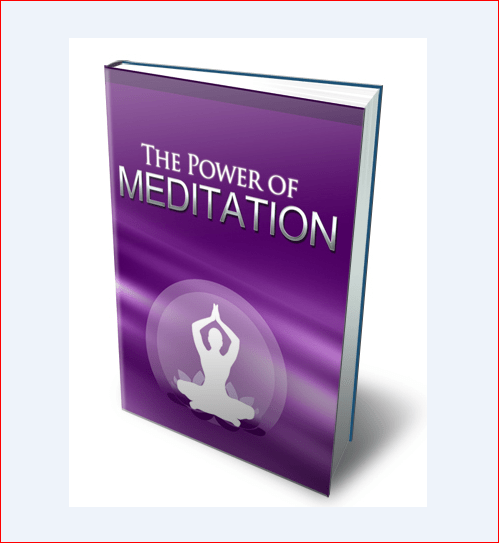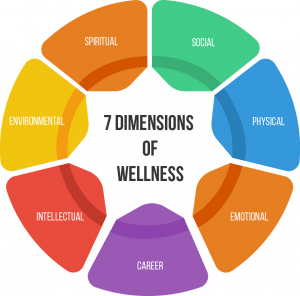Meditation and Success
Meditation and Success. Mediation for the Modern Life Somewhere in Silicon Valley, a group of computer programmers sit silently in a room together, legs crossed and eyes half-closed, listening to the sound of their own breath.
Elsewhere, the owner of a small real estate company starts her day by breathing deeply and engaging in yoga poses.
Still, elsewhere, a data entry specialist finishes his turkey sandwich and returns to his cubicle, puts on his headphones, and breathes deeply while listening to the sounds of bells and waterfalls.
Meditation looks different for different people, but one thing is for sure:
It is quickly gaining popularity in Western culture. It has many professional and personal benefits including increased productivity, reduction of stress and depression, and reduction of troubling physical symptoms such as headaches and muscle tension, to name a few.
The word “meditation” often elicits images of devout men sitting silently in mystical temples far away.
- It can seem foreign and certainly something too far removed from daily life to have a practical application for business or even for personal gain.
- You may have preconceived notions about what meditation entails or cultural or spiritual beliefs which you feel may hinder you from participating in meditation.
- While meditation does have its roots in several spiritual practices, it is increasingly being recommended by Western medical professionals as research is bringing to light the multiple health benefits of regularly engaging in this form of focused relaxation.
Regardless if you choose to meditate for spiritual reasons or for physical and mental health, meditation generally consists of the following elements:
A relaxing environment:
- whether it is in the woods, by the lake, in a studio, or in your living room, mediation usually occurs in an environment that is physically comfortable and free from noisy distractions. Some people choose to sit on a cushion and focus on their breathing in complete silence while others may choose to lay on their beds and listen to relaxing music.
Posture or movement:
- during mediation, the participant will generally sit in a specific posture, such as with the legs crossed, spine straight, and hands resting on the knees. Sometimes participants will lay down or engage in specific movements, such as yoga or t’ai chi.
Focus:
- while meditating, the participant will focus on a number of things from their simple breath, the feeling of energy moving through the body, an object, a value or ideal, or a word or phrase called a mantra.
An open mind:
- during meditation, the participant allows their mind to let thoughts flow through their mind without judging them. Oftentimes, the meditator will observe the thoughts instead of suppressing them and then gently bring their focus back to the intended subject.
How Meditation Increases Success?
- The idea of being successful, or being able to accomplish what you have set out to do or being able to achieve the state of mind you desire, is usually associated with words like “persistence,” “patience,” “hard work,” and “goal-setting”.
- Meditation most likely wouldn’t even be one of the top hundred words associated with success. But it should be.
- Think about it. If one activity, alone, could improve several aspects of your mind and your body at the same time, from problem-solving skills to general creativity to blood pressure, immunity, and headaches, wouldn’t you think it could greatly contribute to your overall success in life?
- The healthier you are and the more empowered you feel, the more likely you will be to accomplish the goals you have set for yourself.
Making Meditation Work for You While meditation can be a prolonged activity, it doesn’t have to take hours of your day.
- Even a ten or fifteen-minute session of meditation can provide some benefits of relaxation.
- The following list serves as a reference for different kinds of meditative practices.
- Choose one or two that you think you might enjoy and incorporate them into your schedule.
- Many people prefer to meditate early in the morning before starting their day to help them start with a positive outlook.
- Others choose to meditate just before bed to help them relieve anxious thoughts and drift off to sleep peacefully.
- A few meditative exercises are detailed later in The Practice of Meditation.
Deep Breathing or Breath Focus:
- This involves closing your eyes and focusing all of your attention on the experience of your breath filling your lungs and leaving your body. This is the basis of most meditative practices and many methods build upon this.
Body Scanning:
- This method is used primarily for relaxation. It involves paying attention to different parts of your body in sequence, allowing yourself to tense and then relax each part, paying attention to how each part feels during the process.
Energy Focus:
- Focusing your attention on the energy that flows through you and finding a sense of being “centered” or “grounded,” meaning a place of relaxed and empowered wholeness. May also involve the use of “chakras” or centers of energy as dictated in the Hindu traditions.
Gazing:
- This is a variation of the Breath Focus technique. Instead of having your eyes closed, you can choose to focus your gaze on an object.
Visualization:
- Entails closing your eyes and focusing your attention on an image of a peaceful place, such as a beach, a mountain, or a favorite hiking trail.
Guided Imagery:
- Involves listening to a teacher or a pre-recorded track to guide you through peaceful images and engage your senses.
Mantra:
- Involves repeating a word, syllable, or phrase many times, either in your mind or out loud.
Music:
- Involves listening to soothing sounds of bells, harps, stringed instruments, wind instruments, and nature sounds while focusing on your breathing.
Yoga:
- This exercise is actually a form of meditation, as each movement is carried out slowly and methodically, paying attention to the breath and energy in the body. It is especially effective when paired with a beautiful setting in nature or meditative music.
T’ai Chi:
- A form of meditative martial arts that allows the user to focus attention on the inner energy flowing through the body.
Qi Gong:
- Combines relaxation, meditation, movement, and breathing exercises to restore and maintain a sense of balance. Focuses on the Chinese concept of Qi, or energy, particularly concentrated around the spine, torso, and forehead.
Walking Meditation:
- Walking can be used as a form of meditation when the user focuses attention on the feeling of movement, allowing all other thoughts to pass by. This is one of the most versatile practices because it can be completed while walking down the hall at work, on the sidewalk, or out in nature.
Insight or Mindfulness Meditation:
- Involves practicing mindfulness on the random stream of inner thoughts, feelings, and sensations as they flow by. It includes a focus on the present state of being as opposed to future or past events.
Positive Affirmations:
- This entails focusing on the positive thoughts that will help you accomplish your goals. Examples include, “I am successful,” “I am loved,” “I am able to do this,” or “I can do anything I set my mind to.”
Reading Reflection or Quiet Time:
- Involves reading a poem, sacred text, or scripture and reflecting upon its meaning or personal impact. Can also be paired with spoken word, sacred music, or journaling.
Movement Meditation:
- Involves attaining a sense of groundedness or centeredness and then allowing your body to move in various ways, focusing on the feelings of your body.




